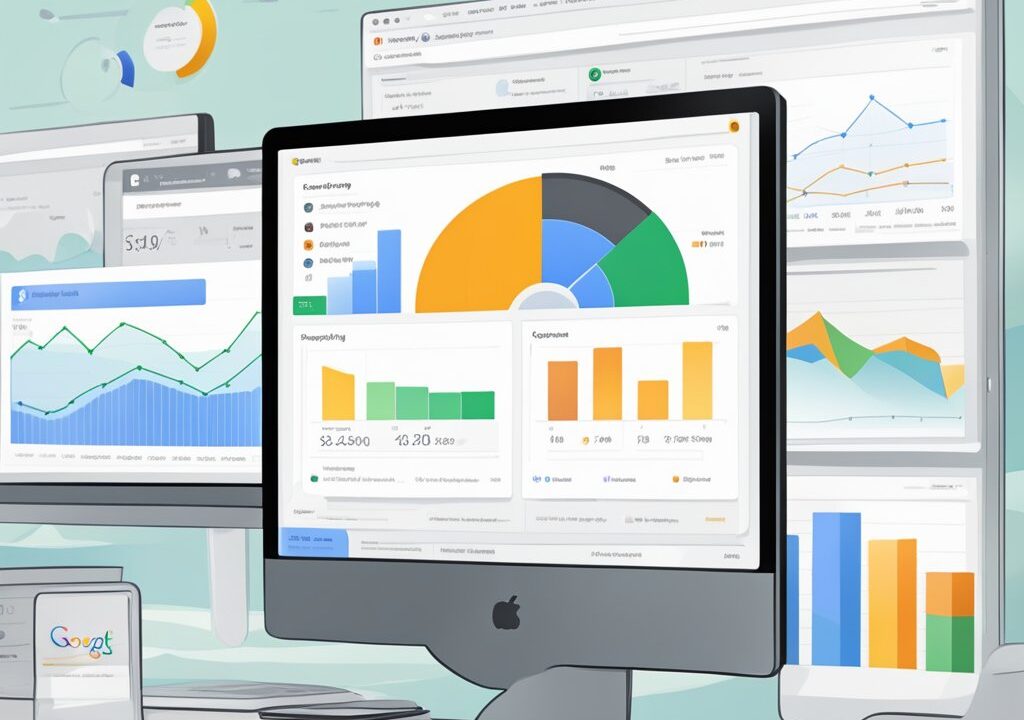Content marketing is a powerful strategy for businesses to attract and engage customers through valuable, relevant content. By creating and distributing informative articles, videos, and social media posts, companies can establish authority in their field and build trust with their target audience. Effective content marketing helps businesses increase brand awareness, generate leads, and drive conversions without relying on traditional hard-sell tactics.

For beginners, content marketing may seem daunting, but it’s a learnable skill that can yield significant results. This guide from SEO Agency Bristol will explore the fundamentals of content marketing, from developing a strategy to measuring success. We’ll cover practical tips for creating compelling content, choosing the right distribution channels, and analysing your efforts to continually improve your results.
Whether you’re a small business owner, a marketing professional, or an entrepreneur, understanding content marketing can help you reach your goals more effectively. By the end of this guide, you’ll have a solid foundation to start implementing content marketing strategies that resonate with your audience and support your business objectives.
Key Takeaways
- Content marketing builds brand authority and customer trust through valuable information
- A well-planned strategy guides content creation and distribution efforts
- Measuring and analysing results helps refine content marketing tactics over time
Fundamentals of Content Marketing
Content marketing revolves around creating and distributing valuable, relevant content to attract and engage a target audience. It aims to drive profitable customer action by delivering useful information rather than pitching products directly.
Understanding Your Audience
Identifying and understanding the target audience is crucial for effective content marketing. Thorough research helps uncover audience demographics, interests, pain points, and preferred content formats.
Creating detailed buyer personas can provide valuable insights into audience needs and behaviours. These fictional representations of ideal customers guide content creation and distribution strategies.
Analysing audience data through website analytics, social media insights, and customer feedback helps refine content strategies over time. This ongoing process ensures content remains relevant and engaging.
Setting Clear Objectives
Establishing specific, measurable goals is essential for content marketing success. Common objectives include increasing brand awareness, generating leads, boosting website traffic, and improving customer engagement.

SMART goals (Specific, Measurable, Achievable, Relevant, Time-bound) provide a framework for setting clear objectives. For example: “Increase website traffic by 20% within six months through weekly blog posts.”
Aligning content marketing objectives with overall business goals ensures efforts contribute to broader organisational success. Regular performance reviews help track progress and adjust strategies as needed.
Content Marketing Strategies
Developing a content strategy involves planning, creating, and distributing content across various channels. A content calendar helps organise and schedule content production and publication.
Popular content formats include:
- Blog posts
- Videos
- Infographics
- Podcasts
- Social media updates
- E-books and whitepapers
Consistency in content quality and frequency builds audience trust and expectations. Repurposing content across different formats maximises reach and efficiency.
SEO optimisation improves content discoverability through search engines. This involves using relevant keywords, meta descriptions, and high-quality backlinks.
Content Creation and Curation

Content creation and curation form the backbone of any successful content marketing strategy. They involve producing original material and selecting relevant existing content to share with your audience.
Crafting Compelling Content
Crafting compelling content starts with understanding your target audience. Research their interests, pain points, and preferences to create material that resonates. Focus on providing value through informative articles, engaging videos, or insightful infographics.
Use a clear structure with headings and subheadings to improve readability. Incorporate relevant keywords naturally to boost search engine visibility. Ensure your content is well-researched and fact-checked to maintain credibility.
Consider using storytelling techniques to make your content more relatable and memorable. Include real-life examples or case studies to illustrate key points.
Maintaining a Consistent Voice
A consistent brand voice helps build recognition and trust with your audience. Develop a style guide that outlines your brand’s tone, personality, and language preferences.
Define your brand’s core values and ensure they’re reflected in your content. Use a consistent writing style across all platforms, whether it’s formal, conversational, or humorous.
Train your content team on the brand voice guidelines. Regularly review and update the style guide to keep it relevant. Consider creating templates for different content types to maintain consistency.
Encourage feedback from your audience to refine your voice and ensure it resonates with them.
Visual and Multimedia Elements
Incorporate visual elements to enhance your content and improve engagement. Use high-quality images, infographics, and videos to break up text and illustrate complex concepts.
Create custom graphics that align with your brand identity. Use consistent colour schemes and fonts across all visual content.
Optimise images for web use to ensure fast loading times. Include alt text for accessibility and SEO benefits.
Consider creating interactive content like quizzes or polls to boost audience participation. Experiment with different content formats, such as podcasts or webinars, to cater to various learning preferences.
Remember to maintain a balance between text and visual elements for optimal user experience.
Promotion and Distribution Channels
Effective promotion and distribution are crucial for content marketing success. The right channels help reach target audiences and maximise content visibility.
Leveraging Social Media Platforms
Social media platforms offer powerful tools for content distribution. Facebook, Instagram, Twitter, and LinkedIn each provide unique opportunities to engage audiences. Tailor content formats to suit each platform’s strengths.
On Facebook, prioritise video content and eye-catching images. Instagram thrives on visual storytelling, making it ideal for infographics and behind-the-scenes glimpses. Twitter excels at short-form content and real-time updates.
LinkedIn caters to professional audiences, making it perfect for industry insights and thought leadership pieces. Utilise platform-specific features like hashtags, stories, and live videos to boost engagement and reach.
Optimising for Search Engines
Search engine optimisation (SEO) is vital for increasing content visibility. Start by conducting thorough keyword research to identify relevant terms your audience is searching for. Incorporate these keywords naturally into your content, including titles, headings, and meta descriptions.
Create high-quality, informative content that addresses user intent. Search engines favour in-depth, authoritative pieces. Optimise your website’s technical aspects, such as page load speed and mobile responsiveness.
Build a strong backlink profile by creating shareable content and fostering relationships with industry influencers. Regularly update and refresh existing content to maintain its relevance and search engine ranking.
Email Marketing Techniques
Email marketing remains a highly effective channel for content distribution. Build a quality subscriber list through opt-in forms on your website and social media platforms. Segment your audience based on demographics, interests, or behaviour to deliver targeted content.
Craft compelling subject lines to improve open rates. Keep emails concise and focused, with clear calls-to-action. Use personalisation techniques, such as addressing recipients by name and tailoring content to their preferences.
A/B test different email elements, including subject lines, layouts, and send times. Analyse metrics like open rates, click-through rates, and conversions to refine your email marketing strategy continually.
Measuring Success and Analytics
Effective content marketing requires tracking key metrics and analysing performance data. This enables marketers to gauge campaign success, understand audience engagement, and refine strategies for optimal results.
Key Performance Indicators (KPIs)
Content marketing KPIs provide quantifiable measures of success. Common metrics include website traffic, conversion rates, and social media engagement.
Page views and unique visitors indicate overall content reach. Time on page and bounce rate reveal how engaging the content is for readers.
Conversion metrics like email sign-ups or product purchases demonstrate tangible business impact. Social shares and comments showcase audience resonance and viral potential.
Return on investment (ROI) calculations compare content costs to revenue generated. This helps justify marketing budgets and prove value to stakeholders.
Analysing Content Engagement

Engagement analytics offer deeper insights into audience behaviour and preferences. Heat maps visualise where users click and scroll on web pages.
User flow reports show how visitors navigate between content pieces. This helps optimise site structure and internal linking strategies.
Demographic data reveals which audience segments respond best to different content types. Geographic information pinpoints regional trends and opportunities.
Referral source analysis identifies which channels drive the most valuable traffic. This informs promotional strategies and budget allocation decisions.
Adjusting Strategies Based on Data
Data-driven insights should inform ongoing content strategy refinements. A/B testing different headlines, formats, or calls-to-action can boost performance.
Content gap analysis highlights topics that resonate with audiences but lack sufficient coverage. This guides future content creation efforts.
Analysing top-performing pieces reveals winning formulas to replicate. Underperforming content may need updates or repurposing to improve results.
Audience feedback and survey responses provide qualitative insights to complement quantitative data. This helps align content with evolving user needs and preferences.
Frequently Asked Questions
Content marketing raises many common questions for beginners. These FAQs address key aspects of strategy, measurement, content types, audience engagement, SEO, and staying current.
What are the essential components of an effective content marketing strategy?
A solid content marketing strategy requires clear goals, audience personas, and brand messaging. It should outline content types, distribution channels, and a publishing calendar.
Resource allocation and performance metrics are also crucial elements. A documented strategy keeps efforts focused and aligned with business objectives.
How can I measure the success of my content marketing efforts?
Key performance indicators (KPIs) help gauge content marketing success. These may include website traffic, time on page, social shares, and conversion rates.
Lead generation, email sign-ups, and sales can measure bottom-line impact. Regular analysis of these metrics guides strategy refinement and resource allocation.
What types of content are most effective for engaging an audience?
Effective content types vary by industry and audience preferences. Blog posts, videos, infographics, and podcasts often perform well across sectors.
Case studies, whitepapers, and e-books can be valuable for B2B audiences. User-generated content and interactive elements boost engagement on social platforms.
Can you suggest techniques for creating compelling content for my target audience?
Research audience pain points and interests to create relevant, valuable content. Use storytelling techniques to make information more engaging and memorable.
Incorporate visuals, data, and expert quotes to add credibility. Tailor content length and format to suit different platforms and audience preferences.
What role does SEO play in content marketing, and how can I optimise my content?
SEO helps content reach the right audience through search engines. Conduct keyword research to identify relevant topics and phrases.
Optimise content with appropriate keywords, meta descriptions, and headers. Create high-quality, original content that naturally incorporates target keywords.
How often should I update my content marketing strategy to stay relevant?
Review content marketing strategies quarterly to ensure alignment with business goals and market trends. Analyse performance data monthly to identify areas for improvement.
Stay informed about industry developments and emerging platforms. Adjust tactics as needed, but maintain consistency in core messaging and brand voice.




